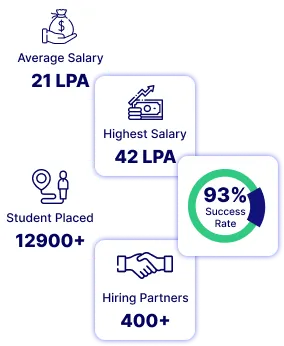The interaction of humans and machines generates many
terabytes of sensitive data. Machine Learning (ML) techniques are our greatest
option for cost-effective and optimal enrichment of this data. Clustering
algorithms are one of the most dependable types of ML algorithms, regardless of
data complexity.
There are various types of clustering algorithm frameworks based on the type of data you're dealing
with: supervised learning, semi-supervised learning, and unsupervised learning.
The system is trained with labeled data in supervised learning. Today we are
going to talk about clustering algorithms in machine learning.
What Exactly is a Clustering Algorithm?
Clustering is a type of ML unsupervised learning
methodology. The unsupervised learning
method concludes with data sets that do not contain labeled output variables.
It is a technique for exploratory data analysis that allows us to investigate
multivariate data sets.
Clustering is the problem of splitting data sets into a
defined number of groups so that the data points in each cluster have similar
features. Clusters are just groups of data points that are arranged in such a
way that the distance between them is as short as possible.
How Do Clustering Algorithms in Machine Learning Work?
Clustering
algorithms in machine learning
works by categorizing data items based on their similarity in properties.
Clustering or grouping items based on their resemblance is vital for any
concept that is unique to human comprehension.
Similarly, in data science and machine learning,
clustering algorithms classify unlabeled data inputs, which aids in data
interpretation and developing patterns for prediction purposes.
Although there are several types of clustering algorithms
used in Machine Learning, the experts examine the operation of Clustering
Algorithms using the K-Means Clustering advanced
algorithms in machine learning.
Some of the clustering
algorithm examples are Spam filter, Marketing, and Sales and classifying
network traffic.
When to Use Clustering Algorithms?
Utilizing a clustering involves giving the calculation a
lot of unlabeled information and permitting it to find data that it can
fetch. Clusters are the names given to
these groups. A cluster is an assortment of information focuses that are
connected with each other in view of their closeness to different data of
interest.
When working with data about which you have no prior
knowledge, clustering methods can be very useful. Clustering techniques are
commonly utilized when looking for outliers in data or detecting anomalies.
Machine learning, computer graphics, pattern recognition,
image analysis, information retrieval, bioinformatics, and data compression are
just a few of the clustering applications. Clusters are a difficult idea to
grasp, which is why there are so many clustering techniques available.
Clustering
algorithm examples can give a perfect idea of what a clustering
algorithm is.
Types Of Clustering Algorithms
Given that we have previously learned how Clustering
Algorithms function, let us now learn about the many types of Clustering
Algorithms.
" K-Means Algorithm
K-means clustering is a centroid-based technique that is
widely utilized. It is regarded as the most basic unsupervised learning method.
K specifies the number of predetermined clusters that must be formed.
Each data cluster in the K-means algorithm is built in
such a way that they are as far apart as feasible. Data points in clusters are
assigned to the nearest centroid until no point remains without a centroid.
" Centroid-based Algorithm
The earliest and most important clustering method, the
Centroid-based algorithm, is a non-hierarchical framework that allows data
analysts to organize data points into distinct clusters depending on their
properties.
These algorithms, as the name implies, organize a specific
cluster around a centroid or a central point that determines the allocation of
data points. Outliers, or data inputs that are wide apart from others, are
included in such algorithms.
" Hierarchical-based Clustering
Depending on the hierarchy, these clustering algorithms
generate a cluster with a tree-like structure, where each newly created cluster
is generated utilizing previously formed clusters.
" Agglomerative Hierarchical Algorithm
On data clusters, the Agglomerative Hierarchical Algorithm
conducts bottom-up hierarchical clustering. When the algorithm first starts
with the data, each data point is handled as a separate cluster.
The algorithm integrates the data points into a tree-like
structure with each succession. The merging process is repeated until a single
group with all of the data points is formed.
The Bottom Line
Clustering's core role is segmentation, whether it be
retail, product, or customer segmentation. Customers and items may be
classified into hierarchical groupings based on several characteristics.
Clustering aids in the extraction of usable knowledge from large datasets
gathered in biology and other life sciences domains such as medicine or
neuroscience, with the primary goal of giving prediction and description of
data structure.





